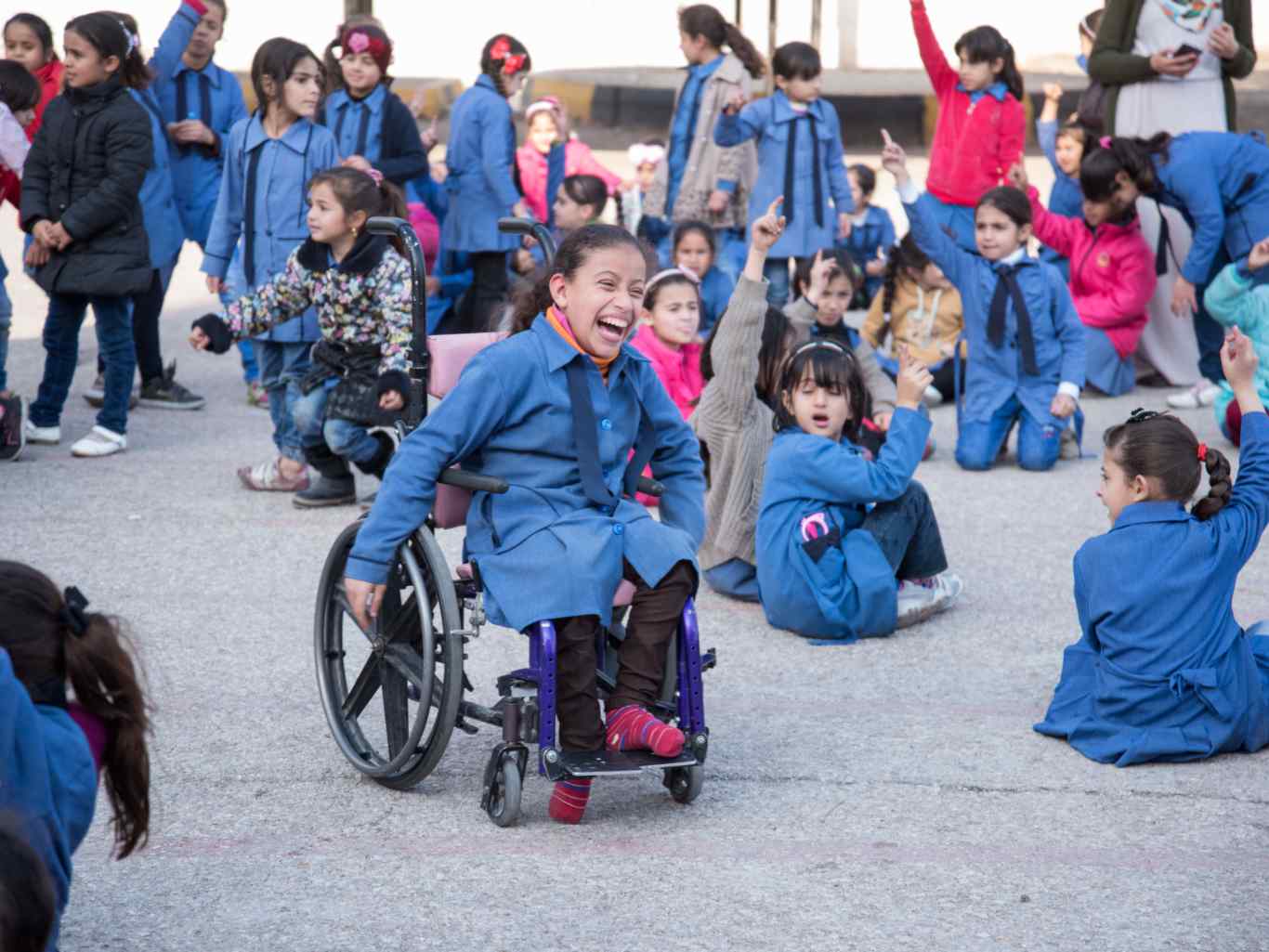
According to the United Nations Convention on the Rights of Persons with Disabilities (UN CRPD), persons with disabilities include those who have long-term physical, mental, intellectual or sensory impairments which in interaction with various barriers may hinder their full and effective participation in society on an equal basis with others (Article 1). Therefore, a disability is acquired in the combination of an impairment and barriers that the affected persons are confronted with. When we talk with and about persons with disabilities, the term inclusion is mentioned regularly. But what is the actual meaning of the word? The UN CRPD provides an answer: Inclusion means that persons with disabilities may not experience any disadvantages or discrimination due to their impairment. An inclusive society recognizes the diversity of persons with their respective potential and needs, breaks down barriers and eliminates prejudices. Inclusion relates to all areas of life (education, work, health care, leisure, housing etc.).
The United Nations Convention on the Rights of Persons with Disabilities
-> The UN Convention on the Rights of Persons with Disabilities, consisting of 50 articles, is the first universal legal instrument to relate existing human rights to the life situations of persons with disabilities.
-> The Convention was adopted by the UN General Assembly on 13 December 2006 and entered into force on 3 May 2008.
-> It has already been signed by 185 states.
Inclusion is a human right
Inclusion of persons with disabilities is a human right. This is defined by the UN CRPD, which was signed by a large part of the international community. The signatories are obliged to promote an inclusive society. The convention stresses/emphasizes three principles:
- Self-determination: Persons with disabilities can decide for themselves which school they would like to attend, where they want to live and what profession they want to learn.
- Participation: Persons with disabilities have the right to participate in social life. This includes participation in political decision-making processes, participation in the labor market but also in leisure and sports activities.
- Equality: Persons with disabilities should participate in society just like everyone else. This means that infrastructural, institutional, and social barriers must be detected and reduced.
Inclusion as a benefit for (a) society
The International Labor Organization (ILO) sees a connection between the lack of inclusion of persons with disabilities and poverty. When people are excluded, their productive potential is lost which creates dependencies and costs at the expense of families, communities and states. This effect can be amplified when family members have to take care for persons with disabilities, because often they don’t have access to education and employment due to time or money constraints as well. If persons with disabilities gain better access to the labor market, they would no longer be dependent on family members of state services. They would be able to pay into social health and welfare systems and thus contribute to social prosperity. Innovations for persons with disabilities, such as text messaging and speech recognition software, benefit everybody in society. Furthermore, persons with disabilities bring individual perspectives and knowledge with them, which are often shaped by their impairment and the associated challenges. This allows them to contribute to a high-performing society.
Participation and equality are essential for living inclusion. Living spaces must be designed to be fully accessible in order to enable people with disabilities to participate in society. An inclusive environment (e.g. a ramp to a building entrance, an elevator or videos with closed captions) can enable persons with disabilities to participate in society. Everybody in society benefits from such an environment.
Inclusion means diversity
An area of life becomes accessible not only when physical barriers are removed – but also when attitude barriers are removed. Attitude barriers are prejudices and thought patterns that contribute to discrimination against persons with disabilities. Characterizing persons with disabilities as needy and hardly resilient is wrong and harms everybody. Persons with disabilities are part of a diverse society. “Diversity” means understanding variety as an enrichment, dealing with it consciously and promoting it in a targeted manner. This also includes showing persons with disabilities a high level of esteem. Living inclusion and thus diversity creates a climate of acceptance and mutual trust and thus promotes peaceful coexistence.